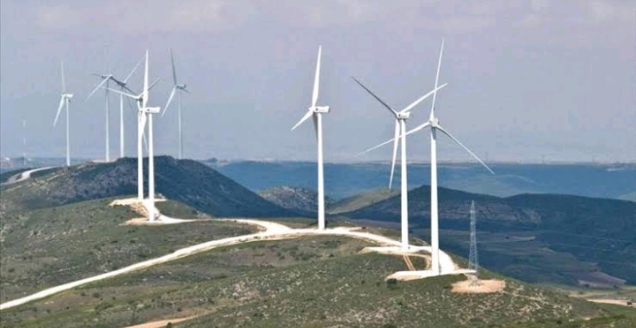Germany Awarded Rights To Build Offshore Wind Electricity Plants – Bello Olanrewaju Olatunbosun
Germany has awarded rights to build offshore wind electricity plants toward a target of 30 gigawatts by 2030, raising over $14 billion (EUR12.6 billion), the bulk of which is earmarked to ease power bills.
The regulator Federal Network Agency said in a press briefing weekend said, Four sites with a combined planned generation of 7,000 megawatts have been awarded in the country’s maiden auction for wind power installations.
Three of the projects are on the German side of the North Sea and one is in the German Baltic Sea, which had the highest winning offer at nearly $2.33 million (EUR 2.07 million) per MW by Baltic Sea OFW O2-2 GmbH & Co. KG. North Sea OFW N12-1 GmbH & Co. KG offered the highest winning price for one of the North Sea sites at more than $2.1 million (EUR 1.875 million) per MW. One project got an offer of close to $2.06 million (EUR 1.83 million) per MW from bp OFW Management 1 GmbH. Another site has gone to bp OFW Management 3 GmbH, which had a winning offer of around $1.75 million (EUR 1.56 million).
Each of the North Sea sites has a capacity of 2,000 MW while the Baltic site has 1,000 MW.
“The successful bidders now have a right to a planning approval procedure for constructing and operating offshore wind installations on their site and to grid connection and the necessary capacity”, the announcement said.
The wind farms are scheduled to come onstream 2030.
“The results confirm the attractiveness of investing in offshore wind energy in Germany,” Federal Network Agency president Klaus Mueller noted in the media statement. “Competition in offshore wind power has never been so high.”
Seventy-two auction rounds were held for the Baltic site while the three North Sea projects reached 65, 64 and 55 rounds.
“The results are a key step towards achieving the offshore expansion target of 30 gigawatts by 2030”, Mueller added.
Ninety percent of the proceeds will go toward lowering power costs on consumers’ end, with the remaining funds allotted to marine conservation and sustainable fishing initiatives.
“The contributions for lowering electricity costs must be paid in equal annual installments to the transmission system operators required to connect the offshore wind farms over a period of 20 years beginning when a wind farm becomes operational from 2030 onwards”, the agency said.
Germany is aiming to raise the share of renewables in its power mix to 80 percent by 2030, according to the amended Renewables Energy Sources Act (EEG). Last year the share of renewables in electricity generation in Europe’s biggest economy stood at 44 percent from 39.8 percent in 2021, 43.8 percent 2020 and 39.7 percent 2019, according to data from the country’s statistics agency Destatis.
Wind has been leading renewables power generation in Germany, accounting for 125.3 billion kilowatt hours (kWh) of the total electricity generation of 571.3 kWh in 2022.
Germany has also enacted a law to close down all coal-fired power plants by 2038. And on April 15, 2023 the nation shut down its three remaining nuclear power plants.















Post Comment